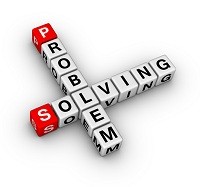 From mismatched IDs to missing certificate wording, Notaries are often faced with specific challenges requiring them to seek alternative solutions. National Notary Association seminar instructor Kathleen Taylor shares the following tips on handling common problems.
From mismatched IDs to missing certificate wording, Notaries are often faced with specific challenges requiring them to seek alternative solutions. National Notary Association seminar instructor Kathleen Taylor shares the following tips on handling common problems.
Name on ID doesn’t match name on document. A woman brings a document naming herself, Mary Alice Smith, as the surviving spouse receiving benefits from a pension plan. Mary has signed the document as Mary Alice Smith, but the name on her driver’s license is Mary Smith.
Even though the signer has a government-issued ID, the name on it ("Mary Smith") does not fully identify your customer with the name in the document ("Mary Alice Smith").
Possible Solutions:
- Ask for an alternate and legally acceptable ID in the name "Mary Alice Smith."
- Ask if she could bring in one or two credible witnesses to affirm her identity. Be sure to follow your state laws regarding the use of credible witnesses.
Document lacks notarial wording. A signer brings you a document containing no notarial wording and asks you to put your Notary stamp on it.
Without notarial wording, you do not know what kind of notarial act the signer needs. As a Notary, you never “notarize” a document; rather, you verify a person's identity and certify the person signed the document or swears to the truthfulness of the document — or both.
Possible Solution:
- Show the signer certificates for an acknowledgment and a jurat, and ask which should be used. You can briefly explain each type of notarization, as long as you don’t advise the signer on which to perform.
Signer and Notary don’t speak the same language. A signer who doesn’t speak English presents a document for notarization, and has brought her bilingual friend to translate. The document contains no notarial wording, and there is no space for a Notary's signature or seal.
Under these circumstances, you cannot proceed because you cannot directly communicate with the signer as to what type of notarization is needed. In most states, you cannot communicate through an interpreter. (Arizona Notaries, however, may rely on interpreters.)
Possible Solutions:
- Refer the signer to a Notary who speaks the signer's language.
Kelle Clarke is a Contributing Editor with the National Notary Association.